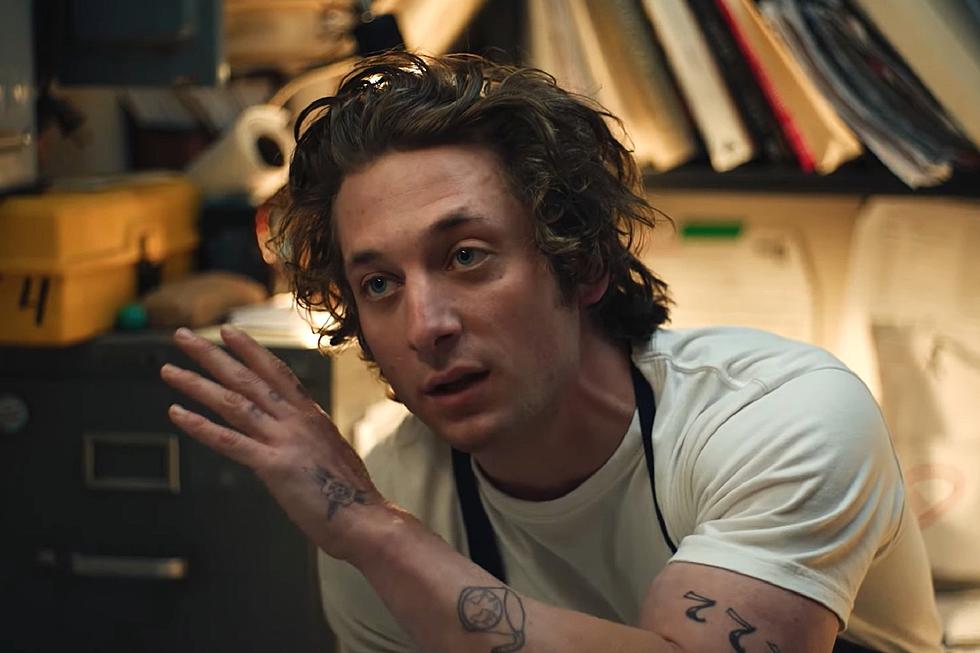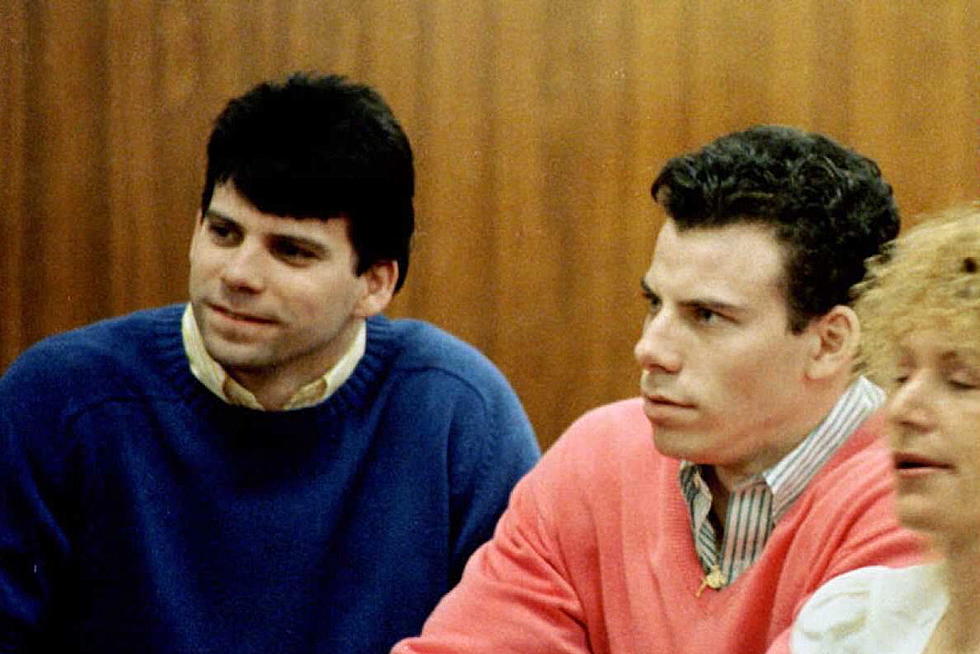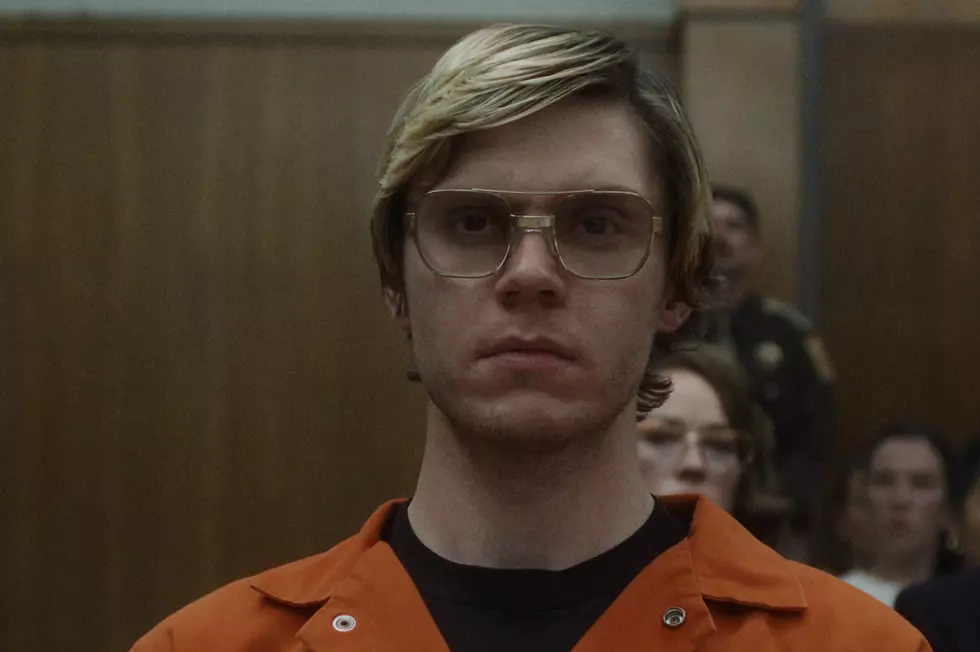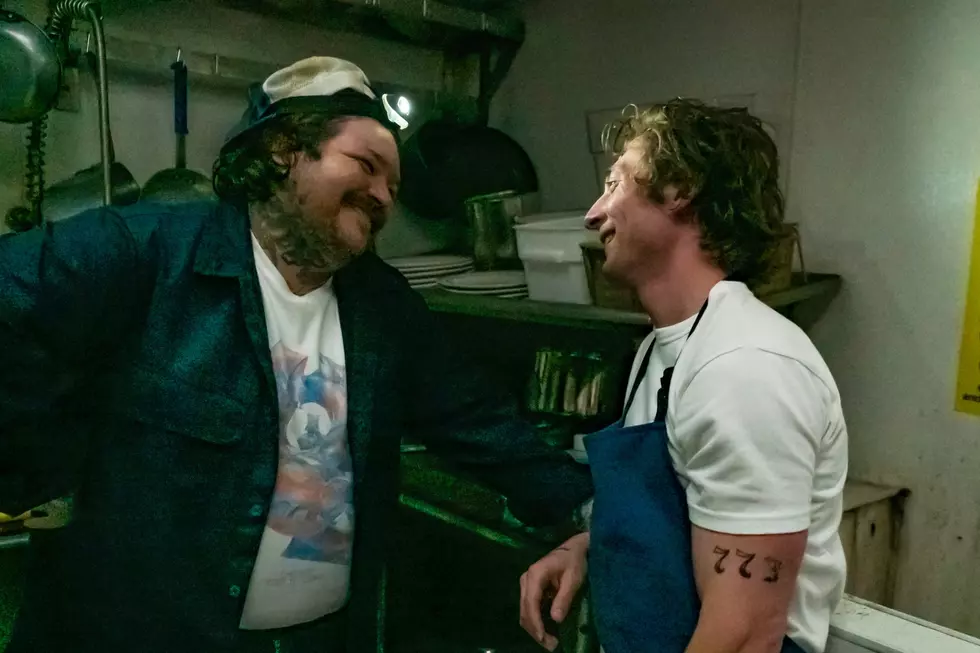
Janet Mock’s ‘Pose’ Directorial Debut Proves Why Hollywood Needs To Hire Trans People
When Kate Mara’s New Jersey housewife Patty sits down across from her husband’s mistress Angel (Indya Moore) in the latest episode of FX’s Pose, she has no idea the woman she’s talking to is transgender. That’s because Angel’s trans identity isn’t the only thing that defines her; she’s also a Puerto Rican woman, a sex worker, and a member of a trophy-winning house in New York City’s ballroom scene. But once Angel discloses her trans identity, Patty asks Angel to “prove it” by showing her what’s between her legs. “Everything I can’t have in this world is because of that thing down there,” Angel says, refusing to be defined by her genitals or give in to shame. “If you want to see who I am, that’s the last place you should look.”
The scene is groundbreaking for a few reasons. For one, it features a trans actress playing a trans character in a lead role. It’s also directed and co-written by author Janet Mock, the first trans woman of color to write and direct for a TV series. Along with the rest of Pose, co-created by Ryan Murphy, Brad Falchuk, and Steven Canals, that scene between Angel and Patty proves why it’s so essential to hire trans people in the writer’s room, behind the camera, and on screen – it brings layers of nuance and authenticity to a community Hollywood has erased, shamed, and misrepresented for decades.
“For so long, for me – a television lover and pop-culture watcher – I’ve watched portraits of myself that were supposedly made for me, but didn’t sound like me, definitely didn’t look like me, and it didn’t feel real,” Mock told me over the phone. Best known for her New York Times bestselling memoir Redefining Realness, Mock noted that while shows like Orange Is the New Black and Transparent helped move the needle forward for trans representation on TV, the fact remains that those weren’t (at least initially for the latter) written by trans people. Pose changes that.
Murphy took a back seat on Pose to instead give creative control to the marginalized voices the series is about, hiring Mock and Transparent‘s Our Lady J to write. Mock and Canals (an Afro-Latinx queer cis man) then cast five trans women of color as series regulars (a first in TV history), brought on trans directors like Silas Howard and LGBTQ figures from ball culture, and hired over 100 trans people on the cast and crew. “I think that our show creates a better ‘for us, by us’ model,” Mock said, “that really shows powerful storytelling and the universality that can exist in the specific experiences of folk who have never ever been seen or centered in the same type of way.”
Set in New York City in 1987, Pose explores the ballroom scene best known from Jennie Livingston’s 1991 documentary Paris Is Burning. Following a large cast of trans and queer characters of color, the show spotlights topics we rarely see on screen, much less accurately: the HIV/AIDS epidemic, gender-affirming surgery, the fetishization of trans bodies, sex work, and so much more. Mock makes her directorial debut in Sunday’s sixth episode, “Love Is the Message,” which she said is a memorial to those lost to HIV/AIDS. I caught up with Mock last week to discuss making history with Pose, why it’s vital for trans people to tell their own stories, and writing complex characters who are more than their trans identities.
I really enjoy the show and I’m trans, so watching it has been a really special experience. Every week, I’m blown away that a show like this even exists.
Oh, thank you. That’s so sweet.
From first meeting Ryan Murphy to getting hired and now having your directorial debut air, what’s that whole experience been like for you?
It’s really been a whirlwind. Everything has really been about just going with my gut and instinct on this whole ride. Meeting Ryan last July, taking the job in August, starting to write right away, all the way through shooting the pilot, being promoted to producer in December, then being told I was gonna direct in March after I wrote episode 6 with Ryan. We just wrapped two weeks ago, so I feel like I don’t have much time to reflect.
I think probably one of the greatest moments that I’ve had recently is watching the cut of my episode, and having this moment of, “Wow, I remember being in charge of the direction of each scene here. And making all of these decisions, from the location scouting to actually camera blocking during rehearsals with the cast, shooting with them.” It felt like such an organic process. I’m just really happy that I get to be a part of it and help bring it out to the world, and that our audience is showing up every week. More and more, people are telling their friends and they’re supporting the show and saying that it resonates and mirrors their experiences. That makes me so, so happy.
I saw you recently tweet that the ratings have been going up each week for the show.
Yeah, episode 4 was our highest rated so far. That’s the overnight numbers. It’s boring industry stuff, but overnight numbers are vital to making sure that we prove that this story some people want to say is niche or marginalized, that it actually does have grander appeal. I think that what we need is to make sure that our core audience become like evangelists to say that, “No, Pose is a show to give a chance to. Pose is a show to watch. Pose is a show to watch now and not wait to binge when all eight episodes have already aired.”
Your directorial debut is my favorite so far. It’s so honest and emotional, but also full of so much joy and celebration amid its heavier topics about HIV and AIDS.
You know, as we were breaking in this story in the writers room, Ryan just really wanted, number one, to give Pray Tell center stage. Billy Porter – who is a national treasure – we’ve never been able to use all the colors in his paint kit or whatnot. So we really wanted to showcase him, but we wanted to use him as the paternal figure on our show. To have him go through something and see how the family shows up, and how they take care of him and what he has to do. That episode really is a memorial to all those who we lost during that time period and we continue to lose today to HIV/AIDS. It was an episode that, writing it, then reading it, and then directing it and watching it, it guts me every time. But it still leaves me with a sense of like, I’m gutted but I still have hope for life. I still have hope to grab it and say that I will do with it what I want.
You know, that’s something we rarely see in LGBTQ stories in film or TV, that sense of hope. There’s so much focus on trauma and death, but to show queer and trans people coming together and celebrating and supporting as a community is really important.
It’s vital, right Oliver? I think that’s one of the strange things that gets missed when straight people, and/or straight cis people make stories about us. Because they miss that nuance. All they see us is through the prism of their own ideas of us being victims, and traumatized. Doesn’t mean that we don’t go through hard stuff and that we don’t have our own traumas and tragedies. But I think we would not be able to survive and live and be here if it weren’t for the connection that we have to one another, the inventive ways that we’ve figured out how to take care of one another and show up for one another.
We’re always trying to infuse that sense of resilience [on the show]. Everyone’s like, “It’s such a positive show.” And it’s like, no, it’s a resilient show because it’s about a resilient community that has been here for decades, right? We’ve always been here. To show that part of ourselves is important and I think it could only happen on a series where we’re centered. We’re not the sidekicks. We’re not on the margins looking in. We are the inside.
I love that you’re writing characters whose trans-ness isn’t the sole focus of their identity. We get to see so many more facets of these women. And when you do talk about their trans identity, it's never didactic or preachy, but naturally embedded into the narratives.
You know, the number one thing I remember telling Ryan was that I have no interest in telling the transition story. I was like, “I’ve done that myself. I’ve told my own story.” In research of my own memoirs, I’ve read dozens of memoirs from trans folks. And it doesn’t mean that we don’t need stories of our origin stories. I just think that we limit us to just the personal struggle and the individual struggle each of us have in our own body when we only allow us to tell that slice of our experience. Because there’s a whole part of our experience that is beyond that. That once we do find contentment with ourselves, what is it like to live in a body that is trans, and for these characters, that are black and brown? And to live in a city at a time that is not centering any of those people, and still to this day. What is it like to struggle and strive and dream and have sex and love and wish and reach in these particular trans bodies?
It’s not something that we try to hide because we’re unapologetic that these characters are trans and that they know they’re trans, or that they know they’re queer. It’s just that in their own reality, they’re in community talking with one another more than anyone else. And so we don’t have to do this explaining, to explain their experiences to one another. I think that’s what keeps it from being didactic in that way. Instead it feels very grounded, very personal, very conversational and very matter-of-fact.
The opening of episode 6 is a really amazing sequence between Patty and Angel. We not only get to see two women having a civil conversation and listening to one another, rather than tearing each other apart over a man, but the way Angel talks about her body really blew me away. To me, this sequence alone and the dialogue you and Ryan have written, proved why we need trans writers in the writer’s room.
Yeah, it was important. Everyone was on the same page as we were breaking it and as I went on to write it. We wanted to be clear that this is a feminist piece. You know, I don’t think it passes the Bechdel test [laughs] because they are talking about a man. But I think that they go from talking about a man to talking about themselves, right? Patty reveals that she’s also been performing, and thought that she wanted something. In order to live a lie, that’s what she thought she wanted. And the same thing that Angel thinks she wanted was to be [Stan’s] woman. And so, in this way, they come to this consensus of, “Why are we even – like, men are dogs. What are we trying to do? He’s obviously picking and choosing when he wants to be with us.”
But most important to me was about disclosure. How Angel tells Patty [that she’s trans]. Because Patty’s dealing with many layers of discovery. Not only is her husband having an affair, but he’s having an affair with a brown woman. He’s having an affair with a sex worker. He’s having an affair with a transsexual woman. So all of these layers of discovery I think instill her with a sense of terror and fear. But I didn’t want Angel to ever buck down or be ashamed of who she is, because she is one of our most confident characters. So when she said, [with a laugh] “I’m a transsexual.” It’s like matter-of-fact, it’s like, “No, no, no, Patty, you are part of our world. And in our world we don’t shame ourselves for who we are.” I think that that, for me, it’s all about who’s in control of the pen. I’m just really glad that you caught onto those nuances and the confidence that I wanted to make sure that she was asserting herself, despite being confronted about something she did that is wrong, that she’s having an affair with a married man.
It’s interesting you mention how Kate’s character is in their world because for me, watching this, it really felt like the show was talking to me and my community, to our trans community. Whereas so often, shows and movies with queer and trans characters are geared towards just a cis audience. Was that what you had in mind while writing?
Yeah. I think that we all have different audiences in the room, which is what makes the writer’s room so great. It’s a collaboration. For me, I’m always speaking directly to my [trans] sisters and siblings. That’s who I’m making it for. That’s why I signed up for the show. I am my sisters and siblings’ keeper, that’s what I do. And so, for me it was like, “Yeah, no, no, no. Patty is in our diner.” It’s the same diner we shoot every diner scene in, she’s coming into our world. In episode 5, she’s coming into the ballroom and she’s going to the House of Evangelista. She is an outsider in our world. She’s on the sense of discovery to figure out herself through the prism of us, through the prism of our experiences. So I think in that way, we subvert the perspective and we subvert who we say is centered.
What I love so much about the cast that we’ve brought in and assembled, specifically the names that we brought in – the talented names who have had longtime careers, Kate Mara, James Van Der Beek, and Evan Peters. There’s been a great humbling. They came to it knowing, “I know I’m not the star of the show, though I’m always the star of every other show that I work in. But I’m going to take a backseat to these very vital and important stories and voices.” Again, it’s a huge teamwork and collaboration, and something that came from top-down from Ryan being like, these are the people that we’re centering in this work, and these are the collaborators I need for it.
I know Ryan has taken a backseat on this more than most of his projects. What has that experience been like for you and Our Lady J to really have more control over the series in the writer’s room?
Well J was in our room for a little bit in the beginning and then a little bit at the end because she had to take a break for Transparent. So for a lot of it I was the sole trans voice in the room, which is fine. Because, I’m sure you’ve seen some of my work, I’m no wallflower so it’s fine. [Laughs] A lot of it was a lot of deep, deep, deep discussions but also at the same time too, it was a learning experience for us all. For me, I had never written a script before. I’d never worked or written for television in that way before. But at the same time, they had never been trans and they had never known the experiences that I had, that J had, and that we had to mine our very personal experiences to help feed the story of these characters.
For me, there was the burden of, we’ve got to get this right. It has to feel real. We need to be more specific. We cannot shy away from talking about the body ... especially in episode 4 that I wrote, I went there, all the way, about the way in which trans women look at their bodies when they look at other women, and not just looking at cis women. Because also trans women are communing with each other so they’re looking at each other’s bodies and wanting certain things that feel more feminine, that look like more of an ideal. And then how does that then lead them into like these relationships that they have with these men, some of whom are fetishizing their bodies?
Showing two cisgender straight-identified men in sexual relationships with two different trans women was important. I wanted to show that this was not unique, that men and people desire our bodies and they come for us and they want us, and we share [our bodies] with them. All of those themes and the specificities were the most vital to me because I knew that that’s what was gonna get viewers, specifically trans viewers, to watch and be like, “Holy s–. I went through that and I cannot believe it’s on television.”
It’s so radical to see that with Candy’s narrative, and how it touches on the pressures of feminine beauty standards and the difficulties of access to medical transition needs at that time.
Completely. The opening shot [of episode 4] was a celebration of trans women of color’s bodies, and it was brilliantly directed by Gwyneth Horder-Payton, who was my directing mentor, as well as Ryan Murphy. I shadowed her throughout that episode because I wrote it. We wanted to flip the paradigm and say, “I don’t want us to say cisgender women are the ideal. Instead, what if we made the bodies that these women are celebrating black and brown trans women’s bodies? So they’re gonna be celebrated. They’re gonna get 10s across the board.” Also bodies that are curvy and voluptuous. Not statuesque, thin, supermodel bodies, which were becoming in vogue at that time. But beyond the struggle with the body, it’s also about what the ballroom is. The ballroom, and she says – I can’t remember the exact line I wrote, but it was, “This is how I see myself and in ballroom I should be able to project that image however I want.”
There’s so many different themes around that. And of course the HIV/AIDS storyline in there with House of Evangelista boys being tested with Pray Tell, and the diagnoses that comes through that are also powerful points about the body and sex and desire and fear that were really going on throughout that whole time period, and still today.
From your perspective, does it feel like the industry is finally listening and realizing why it’s so important to have trans people and people of color in the writer’s room?
Oh my god, it’s vital. That’s one thing that Ryan got right. He knew that he might not have been the ideal steward to bring this particular series about black and brown queer and trans low income folks into focus. Knowing that, he brought on all of these consultants from the ballroom. He brought in choreographers who are trans and who are also part of the ballroom scene. He brought on writers, like me and Our Lady J, and he found a script written by an Afro-Latinx queer man from the Bronx who had roots in these communities. I think it helped set the tone for what the show was.
Do you feel like Pose will hopefully inspire more other shows to do the same in the future?
I hope so. I also think about the power of the influence that we’ve already had, right? Like we have [trans] PAs on set, and people in our hair and makeup departments, background actors, all of whom have never been on a set before, and now they have Pose as their credit. They’ve been let into the door and now they can push through. Maybe they’ll write their own screenplays, maybe they’ll continue to work in props. They now have this show as a building block to be let in. I think that the number one thing you can do anytime you have access, is to make sure you keep that door open and bring your people in with you. I think Pose has been that vehicle for a lot of people to be inspired to say, “Oh s–, I’m deserving of being seen and heard. I’m deserving of being in this space as well. And I have something to say.”
More From ScreenCrush









